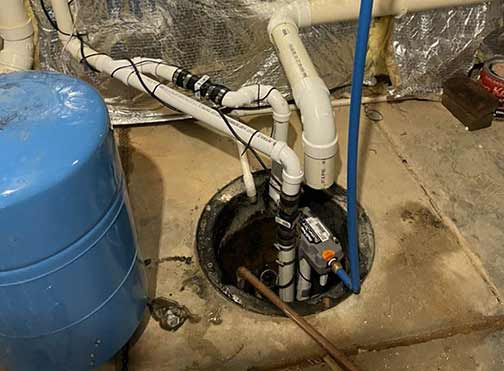
How would you define the role of the sump pump in your home? If you described it as a major component of your home’s flood protection system, you would not be wrong, says Keyrenter Premier company. But the truth is, your sump pump is a lot more than that.
In reality, the sump pump in your basement is your home’s last line of defense from the threat of floods and water damage, whether that threat is coming from inside your home or outside. In a way, you can liken your sump pump to a sentry.
That’s because, like a spotter, the sump pump is always watching, even when you are asleep, away at work, or on vacation. Since the sump pump never takes a break, you can go about your daily life knowing that your home is safe from flooding.
Why is a basement sump pump such an effective defense against flooding? Because of its automatic mechanism, sump pumps do not need the active participation of their owner to protect the home. They run themselves.
Yet this can also be a problem.
The very thing that makes a sump pump great can also make it bad. The fact that a sump pump does not need you to switch it on and off means that you don’t know when it is on or off. It means you can assume that your sump pump is working when it is not.
This reality is the reason for many unexpected flooding events in homes where the homeowner had a sump pump installed in their basement. The sump pump stopped working, but the homeowner only realized this after it was too late.
How can you guard against unpleasant surprises from your sump pump?
Your sump pump needs attention
Although the sump pump does not need you to switch it on and off, it does need you to pay attention. Many problems can prevent the normal function of your sump pump, and these problems don’t always manifest themselves.
Common issues that can cause a sump pump to fail or malfunction include;
- Stuck float switch
The float switch controls the sump pump by powering it on and off as needed. If the float switch is stuck, either because of debris or because the pump has moved and wedged it, the sump pump will not come on or go off if it comes on.
- Broken impeller
The impeller is a fan-like structure inside the sump pump that allows it to suck up water. If the impeller is bent, broken, or damaged in any way, the sump pump will power on, but it will not pump water.
- Clogged discharge line
The discharge line carries pumped water from the sump pump to the discharge point on your property. If it is clogged by leaves, soil, or animal nests, water will not pass through. Instead, pumped water will return to the sump basin.
- Blocked inlet
The inlet is the opening at the bottom of the sump pump where water enters. If the inlet is blocked, the sump pump will be ineffective even if the float switch, discharge line, and impeller are all okay.
- Faulty check valve
The check valve is inside the sump pump outlet pipe. It keeps pumped water from cycling back into the pump. If the check valve is broken, the sump pump will pump water continuously until it breaks down.
- Electrical problems
This includes power outages and issues with the home’s wiring. A power outage during a storm will stop your sump pump from working when it is most needed. Problems in your home’s electrical circuit can put the sump pump out of commission.
How to keep your sump pump operational at all times
- Test the sump pump
Create a routine for testing your sump pump. To test the pump, pour water into a large bucket and empty it into the sump basin. The sump pump should power on. Listen for strange noises as it works and wait to see if it switches off normally. Do this on a schedule, at least quarterly.
- Inspect and clean the sump pump
Check the components of the sump pump for signs of damage. Clean the sump basin and sump pump. Check the discharge line outlet for debris and install a mesh over it. When the pump is on, listen to see if the check valve is working properly. Do these checks at least once every quarter.
- Install a backup pump
A battery-powered backup sump pump will protect your home if there is a power outage and your main sump pump is knocked out. Battery-powered sump pumps provide an additional layer of protection against flooding.
Lastly, to keep your sump pump system working optimally, you need an experienced plumber who can spot problems before they happen. A good plumber keeps your home safe from water damage by arming you with new knowledge and technology as they become available.

